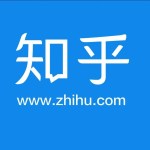How-to & Go-to Guides of All Things Around China.
In the heart of China’s digital revolution lies Toutiao (今日头条), a content aggregator that has reshaped how over 120 million daily active users consume news and entertainment. As the flagship product of Bytedance—the tech giant behind TikTok—Toutiao’s success hinges on its AI-driven recommendation engine, which delivers hyper-personalized content without relying on social graphs or explicit user inputs. This article dives into Toutiao’s technical innovations, content ecosystem, global ambitions, and the challenges it faces in an increasingly regulated world.
The Algorithm That Redefined Content Discovery
Toutiao’s core strength lies in its machine learning algorithms, which analyze millions of user behavioral signals—including swipe patterns, reading duration, and location—to create tailor-made feeds. Unlike platforms like Facebook, which rely on social connections, Toutiao’s recommendations are purely data-driven. For example, during the 2016 Olympics, Toutiao’s AI-generated articles outperformed human-written pieces in readership metrics, showcasing the system’s ability to produce and curate content at scale.
By 2025, Bytedance’s algorithms had achieved a 95% content-user match rate on TikTok, a testament to its iterative improvements. This precision is fueled by multimodal fusion technology, which interprets not just text but also video visuals and audio cues. For instance, a user watching a cooking video might receive recommendations for related recipes, kitchen gadgets, or even local cooking classes—a level of contextual understanding that traditional platforms struggle to replicate.
Content Ecosystem: From News to Entertainment
Toutiao’s appeal stems from its eclectic content mix, blending breaking news, viral videos, and niche interests. The platform hosts over 3 million creators on its Toutiao Media Platform (头条号), where bloggers, journalists, and brands publish articles, videos, and live streams. In 2024, creators earned over $1.2 billion through ad revenue and brand partnerships, incentivizing high-quality content production.
A notable innovation is Headline Search, which integrates with Douyin (TikTok China) to offer real-time updates on trending topics. Users can switch seamlessly between reading articles about a viral challenge and watching related videos, creating a content consumption loop that boosts engagement.
Global Expansion: From Toutiao to TikTok
Toutiao’s success laid the groundwork for Bytedance’s global ambitions. The company adopted a Build & Buy strategy, launching international versions like TopBuzz while acquiring platforms like Musical.ly (later merged with TikTok). By 2025, TikTok’s global user base exceeded 1.8 billion, with Europe and Southeast Asia driving growth.
However, Toutiao itself remains primarily a domestic product, focusing on China’s unique media landscape. Its localized features include:
- Regional news hubs: Tailored content for cities like Wuhan and Chengdu, covering local events and dialect-specific humor.
- Government partnerships: Official accounts for state media and government agencies, ensuring compliance with China’s content regulations.
Challenges: Balancing Innovation and Regulation
While Toutiao’s algorithms have democratized access to information, they’ve also raised concerns about information 茧房 and content moderation. The platform employs a hybrid system of AI filters and human moderators to flag misinformation, removing over 10,000 fake news articles in May 2025 alone. Yet, critics argue that strict content controls limit diversity of opinion.
Internationally, Bytedance faces geopolitical hurdles. The U.S. government’s ongoing scrutiny of TikTok has forced the company to invest $1.5 billion in data localization projects like Project Texas, ensuring American user data remains onshore. Similarly, the EU’s GDPR requires Toutiao to anonymize user data and provide granular privacy controls, adding layers of complexity to its operations.
The Future: AI, Commerce, and Beyond
Toutiao is evolving into a super app, integrating e-commerce and live-streaming features. In 2024, its Toutiao Mall generated $80 billion in GMV, with agricultural products and electronics being top sellers. The platform also leverages AI for real-time demand forecasting, helping merchants optimize inventory and logistics.
Looking ahead, Bytedance plans to expand Toutiao’s AI capabilities, including:
- Generative AI tools: Assist creators in scriptwriting and video editing.
- Hyper-localized services: Partnering with local businesses to offer deals and event recommendations.
Conclusion
Toutiao’s rise exemplifies China’s tech innovation prowess. By merging cutting-edge AI with a deep understanding of user behavior, Bytedance has created a content ecosystem that’s both addictive and adaptable. While regulatory challenges and global competition persist, Toutiao’s focus on infrastructure investment and localized solutions positions it as a leader in the future of media.
For more insights into China’s tech giants, check out our articles on TikTok’s global dominance and Alibaba’s e-commerce empire.
This article is part of our series on China’s digital transformation. Stay tuned for more updates!








